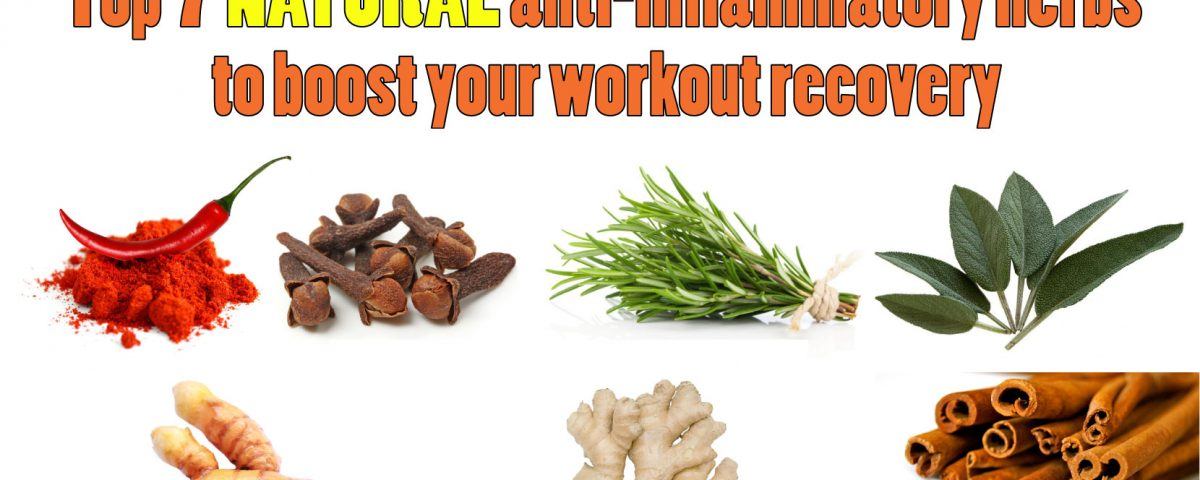Top 7 NATURAL herbs to boost your workout recovery

Spices and herbs are truly a gift from God. Not only do they add delicious flavor to food, but are very healthy to consume regularly. Many herbs have been documented to improve antioxidant function and are commonly known to improve gut flora. Eating anti-inflammatory herbs can have an incredible boost to your health, well being, and can be very delicious and satisfying. Many chronic diseases result from inflammation on the cellular level. To reduce inflammation to healthy levels is the key to attaining the best functioning of your body, improve your immune system, gain energy, mental acuity, and many other benefits.
However, not only herbs and spices have anti-inflammatory properties, vegetables do too. Vegetables in the cruciferous family, like broccoli and cabbage are both high in anti-inflammatory properties. Also, fish, egg yolks, and grass-fed meat are anti-inflammatory. With that being said, spices and herbs are special because the their anti-inflammatory benefits are so potent and concentrated compared to vegetables. Including just a few healthy herbs to your food can increase the antioxidant power of your food, and taste great!
- Turmeric
- Cayenne
- Ginger
- Cinnamon
- Cloves
- Sage
- Rosemary
How Herbs and Spices Reduce Inflammation In Your Body
Ayurvedic and Chinese medical doctors have used many herbs and spices to treat illness for thousands of years. This is largely because of their anti-inflammatory and antioxidant properties. As well, the changes they cause to their gut biome. Inflammation and oxidation are very closely connected. Antioxidants stop free radicals that damage cells and lead to more inflammation. Nutrients can prevent inflammation other ways too. For instance, notably by turning off genes that cause inflammatory proteins or processes, by increasing the amount of proteins that can counter the inflammation and modulate the gut biome.
A great example of this is fresh ground cinnamon. Cinnamon is a powerhouse spice. Not only is it delicious, but just half a teaspoon of ground cinnamon has as many antioxidants as half a cup of blue berries. Also, half a teaspoon of dried oregano has equal antioxidant fighting power as three cups of raw spinach!
Turmeric
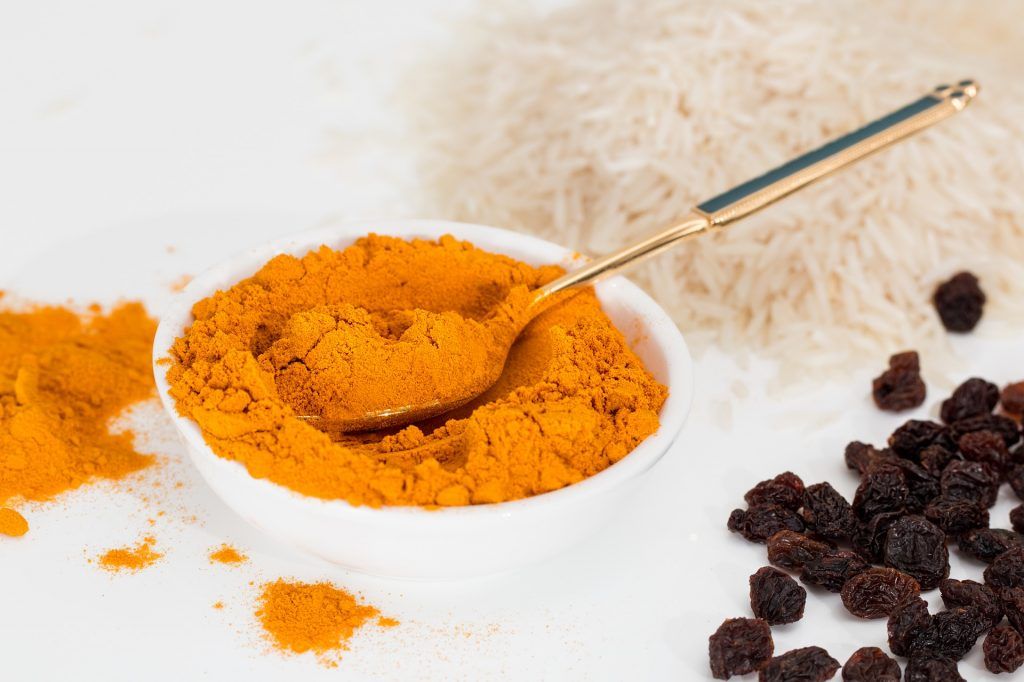
Turmeric is a very special herb. It has been used for centuries in Indian and Chinese medicine. From everything from liver disease to arthritis to immune disorders, rigorous scientific studies in recent decades have confirmed that not only does turmeric have antioxidant and anti-inflammatory properties, but also antiviral, antibacterial, anti-fungal, and anticancer properties. Because of this it can help prevent disease, diabetes allergies, arthritis, Alzheimer’s, and other chronic conditions. Simply put, turmeric is a top contender to start incorporating into your diet today!
Turmeric’s benefits are largely because of curcumin. Curcumin is a potent antioxidant that greatly reduces inflammation(and also gives it its yellow color). Curcumin stops the growth of tumor cells in many kinds of cancers and can improve insulin resistance in those with altered metabolic function. Not just curcumin is contained in turmeric, but there are over two dozen other anti-inflammatory compounds. Additionally, turmeric stops the formation of the beta amyloid plaques that cause Alzheimer’s disease. You can include this great herb in your diet today in clever ways like adding it to salad dressing, making teas from it, or even marinading meat with it!
Cayenne Pepper
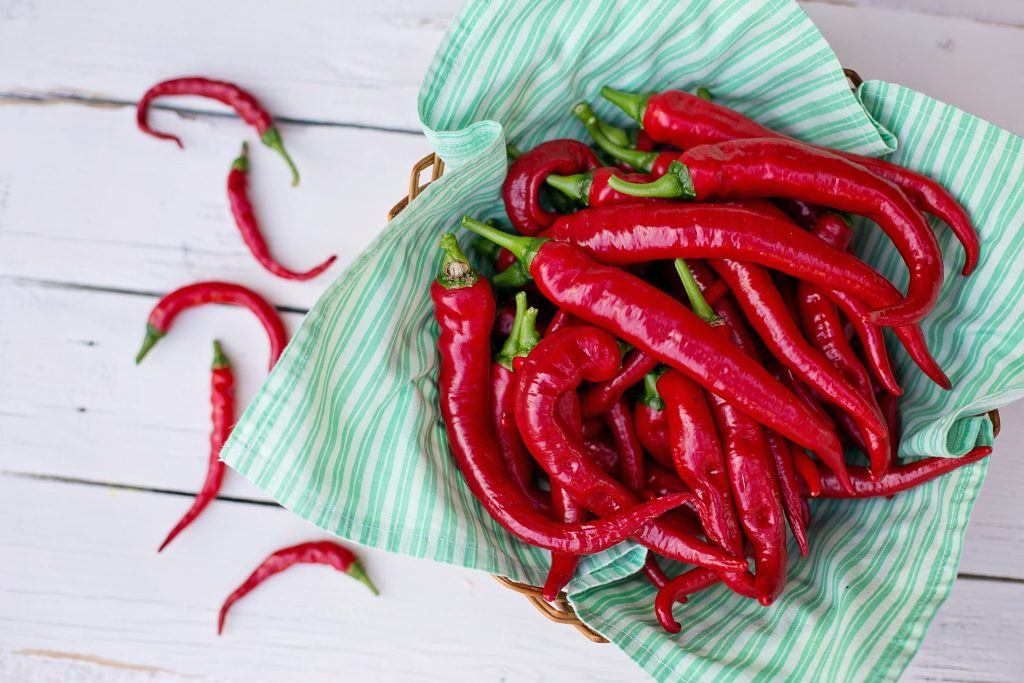
Capsaicin is the compound responsible for both the medicinal properties of cayenne pepper and its spicy taste. The hotter the pepper, the more capsaicin it contains. It’s used widely in ointments and creams as a pain-relief aid because it depletes nerve cells of substance P, a chemical that transmits pain signals to the brain.
Native Americans used cayenne as a food and medicine for thousands of years, and the spice has been used widely by healers in India, China, and other parts of Asia for centuries to relieve digestive and circulatory problems.
Warning: cayenne is a member of the nightshade family, and you may be sensitive to it. It is also almost as likely as black pepper to have high amounts of mold toxins in it. Quality matters, and storage conditions matter greatly for this spice.
Cayenne contains a range of flavonoids and carotenoids – antioxidants that scavenge free radicals to protect against the cellular damage that leads to inflammation and disease. Research is underway now to determine whether cayenne can prevent or slow cancer cell growth, and some studies suggest the spice can prevent prostate cancer; however, the science here is young and some results are contradictory.
Cayenne may also promote weight loss by raising core body and skin temperature, thus inducing greater energy expenditure. There’s even a study showing that if you mix it with XCT or Brain Octane as a carrier, it can increase thermogenesis over either one used alone!
Ginger
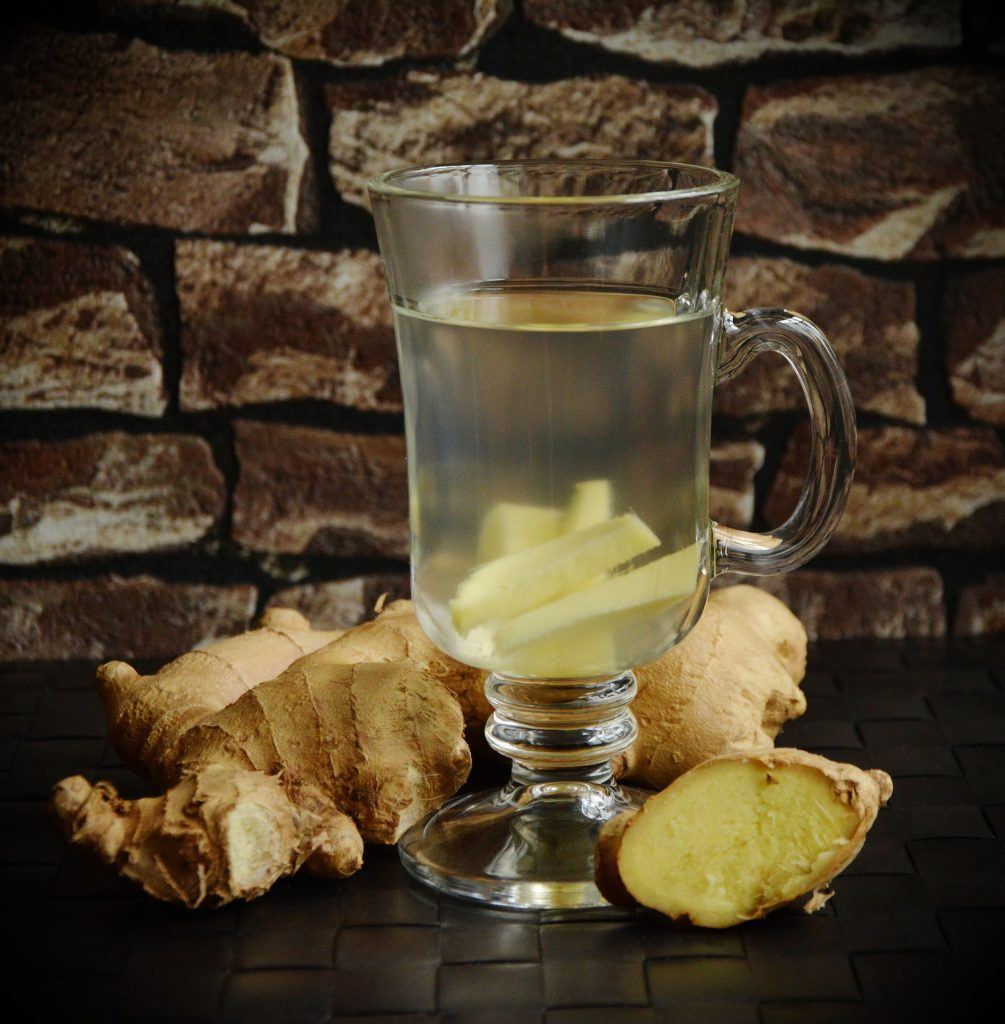
Ginger is another spice that’s been used for centuries for inflammation and pain, to soothe sore muscles and throats, and combat general aches and fatigue. Ginger attacks inflammation through the action of gingerols, shogaols, and paradols.
The potent antioxidant 6-gingerol inhibits production of the free radical peroxynitrite that causes inflammation and pain[xii]. (Overgrowth of gut bacteria is linked with excessive peroxynitrite.) As a group these ginger compounds act like non-steroidal anti-inflammatory drugs (NSAIDS) (e.g., ibuprofen, Aleve, Celebrex) used widely in this country to relieve arthritis pain. But why turn to drugs when ginger blocks the pain-causing chemicals associated with arthritis? Systematic reviews of clinical trials confirm the effect of ginger in relieving osteoarthritic pain[xiii].
It goes well in Asian dishes (and really anything, if you like the kick), it’s great added to tea for a sore throat or cold, and it’s effective in fresh and powdered form. Ginger is easy to use in foods, but you can even apply it directly to a painful joint for relief. The component 6-shogaol has an effect similar to that of capsaicin (the active component of chili peppers) on the neuropeptide substance P, which sends pain signals to the brain[xiv].
Low quality or poorly stored ginger powder is at high risk for mycotoxin, and fresh ginger molds easily in the fridge. There are documented immunosuppressant mycotoxins in some ginger molds and it was described as “heavily contaminated” in another survey of spices – so get the fresh stuff, or store the dry stuff away from heat, moisture, and light.
Hint for cooking: if you cook ginger in fat, it tends to get bitter. Adding it towards the end of cooking with oil preserves flavors better!
Hint for sushi: All sushi ginger has sugar in it, but if your sushi ginger is pink, it also contains artificial dye. Only eat the yellow version, and not a lot unless you want the sugar.
Hint for joint wraps: peel and mince 1-2 Tbsps. of ginger and mix with enough XCT oil to form a paste. Warm the paste and apply to joint for 10-15 minutes with or without a wrap.
Cinnamon
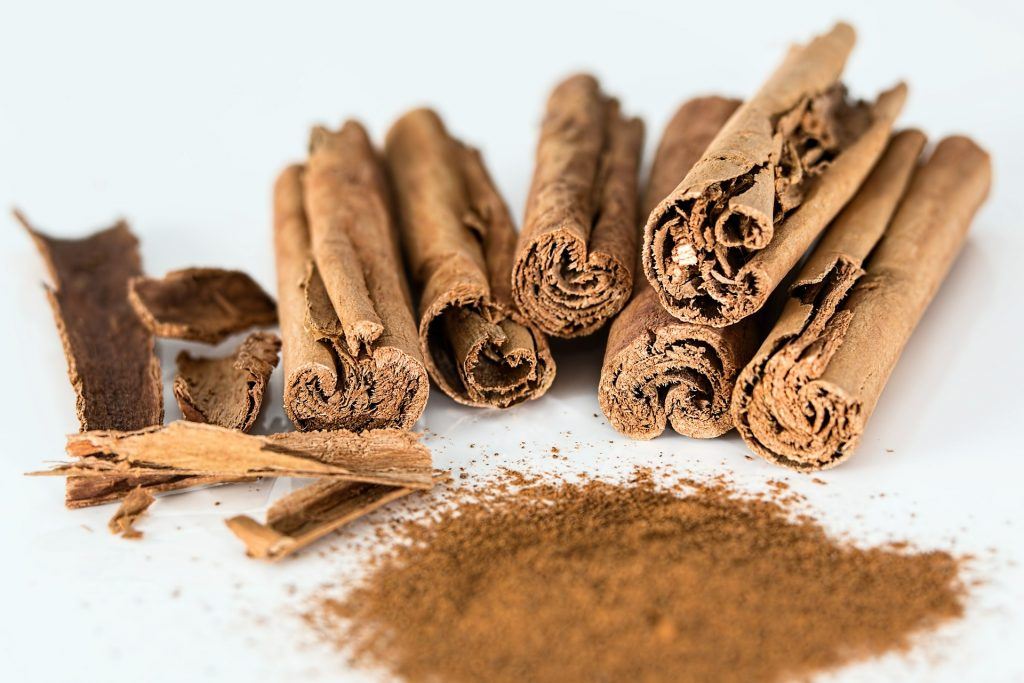
Cinnamon’s claim to fame is its ability to lower blood sugar in diabetics by activating insulin receptors. Like many other herbs and spices, cinnamon also has a host of compounds with antioxidant and anti-inflammatory properties that can lessen the likelihood of cellular damage and chronic disease.
Cinnamaldehyde inhibits the NF-kappaB proteins, transcription factors for pro-inflammatory genes and genes involved in immune, growth, and cell death responses, and it prevents blood platelets from clumping – all of which protect against heart disease, among other diseases of inflammation.
Cinnamon also blocks growth factors associated with abnormal cell growth, thus protecting against cancer.
Cloves

Cloves contain eugenol, a compound similar to but more potent than cinnamon’s cinnamaldehye, and thus the spice also protects against the inflammation that underlies heart disease, cancer, and the other chronic diseases that plague eaters of the typical American diet.
Eugenol works in part by blocking the COX-2 enzyme that causes inflammation (and which, if you recall, is the target for NSAIDS). Cloves are extremely rich in antioxidants, including the flavonoids kaempferol and rhamnetin.
Their free-radical scavenging power is actually greater than that of the synthetic antioxidant compounds butylated hydroxyanisole (BHA) and butylated hydroxytoluene (BHT) used as food preservatives (despite being likely human carcinogens). Cloves pop up in autumnal recipes, like mulled wine and poached fruit, and whole cloves can be ground to add to spice mixtures for meats and other dishes.
Cloves are also powerfully antifungal in the body and applied locally, but clove oil is so strong it can be toxic if overused.
Sage
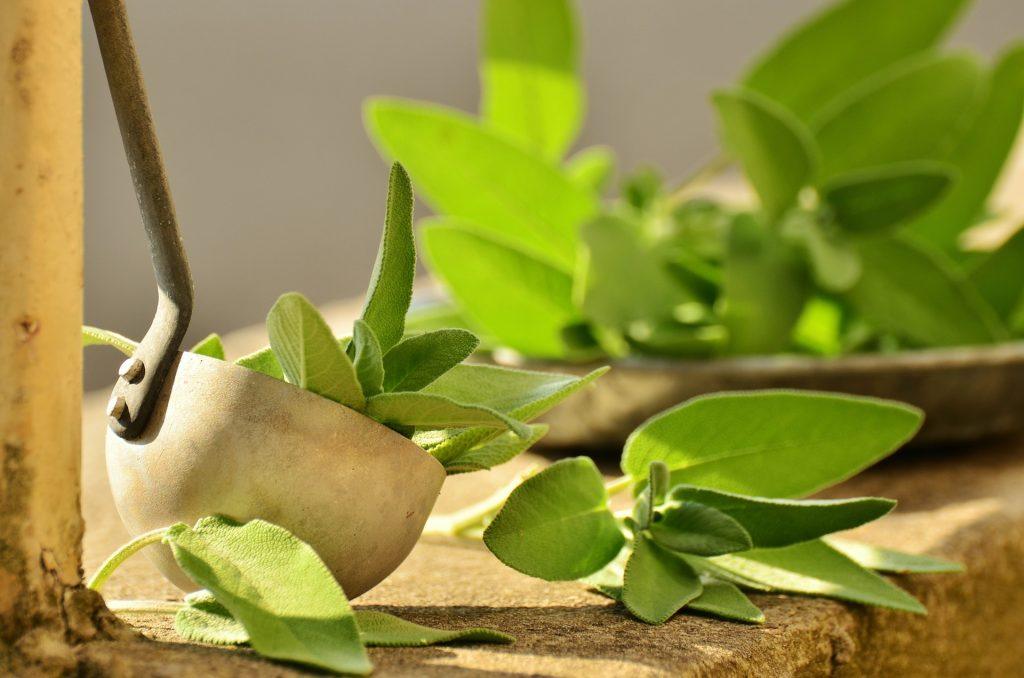
Carnosol and carnosic acid are the main anti-inflammatory molecules that give sage it’s smell, flavor, and health benefits. Sage has been studied for it’s beneficial effects against inflammation based neurological conditions, such as Alzheimer’s. This herb also shows much promise for improving concentration and memory, and can even help quell anxiety. Carnosic acid and carnosol additionally have been found to have antioxidant and anticancer effects. There are many species of sage, and each can have their own flavor.
Camphor is another constituent of sage, which kills bacteria and fungi. In the kitchen, a great recipe for sage is with winter squash and sausage.
Rosemary
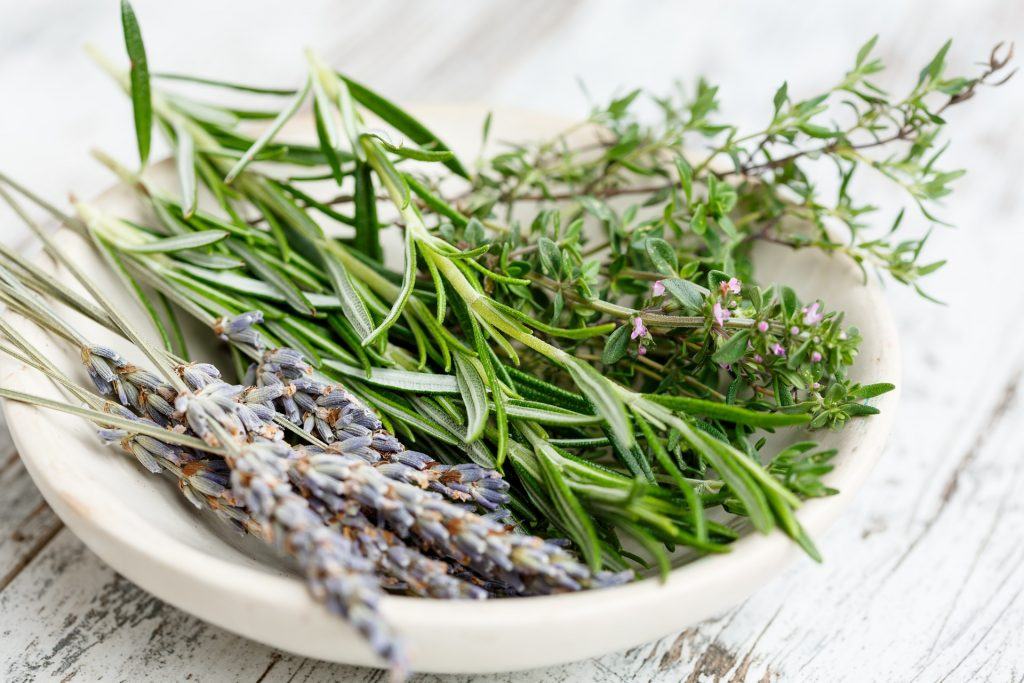
Rosemary is similar in composition to sage. It contains many of the same anti-inflammatory and antioxidant compounds, and even one named “rosemarinic acid”. Both sage and rosemary work by increasing the activity of superoxide dismutase, an enzyme that removes superoxide, the free radical that is often associated with chronic inflammation. This activity is most potent with the cooked herb, so use rosemary liberally on roasted veggies, meats, and other cooked meals.
The uncooked herb is still useful, because it contains rosemary’s flavonoids, which are very beneficial in themselves. They include apigenin, which is a compound that can inhibit the growth of pancreatic cancer cells. Also, it contains diosmin, which prevents hemorrhoids. Like many other anti-inflammatory agents, these work by stopping the synthesis of prostaglandins, the proteins that trigger inflammation.
Here’s a tip, when you cook something with oil, add some rosemary to the oil to allow the antioxidants to help prevent the oil from oxidation.

